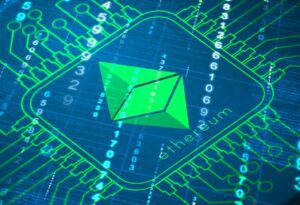
Table of Contents
ToggleThe imminent arrival of Ethereum’s network update, dubbed ETH 2.0, generates great expectations among both fans and detractors of the network.
But there is also a third group, whose expectation for the arrival of this update is based on a different justification, the completion of its income generation mechanism.
Of course this group is made up of Ethereum miners.
And the question is, once the network transforms to Proof of Stake, where will these miners take, their computational power? What to mine after Ethereum 2.0?
In this article, I will walk through the most important forward-looking alternatives for this very important set of people during Ethereum’s early years.
How does ETH 2.0 affect miners?
Ethereum was born as a blockchain that achieves its consensus through the Proof of Work mechanism, therefore its normal operation and security rest on the work performed by miners.
They provide their computational power to solve mathematical problems that allow the creation of new blocks in exchange for rewards, which come from the new ETH created in each block.
From the beginning, in Ethereum’s roadmap, it was determined that the network would be transformed to Proof of Stake, a system by which blocks are created by validators, who instead of providing their computational power, provide a minimum amount of 32 Ethereum as a guarantee and by means of an algorithm that simulates a lottery, the production of new blocks is assigned.
The miners, in order to have the necessary computational power made their corresponding investment in the hardware that allows mining Ethereum, the well-known GPUs (Graphics Processing Units).
So, once the network passes to form its consensus via Proof of Stake, what will these miners be able to do with their hardware?
Below I will review some of the most suitable options, from classic cryptocurrencies to alternative and riskier options.
Classic mining options
Ethereum Classic
Undoubtedly, the default option. This network was born in 2016 after the famous hack to the DAO that divided the waters in the fledgling Ethereum network. On the one hand, those who decided to return the state of the network to the time prior to the attack and continued as the Ethereum we know today. On the other hand, those who decided to face the consequences of the hack and continue with the network without performing the rollback (return to the previous state) and gave birth to Ethereum Classic.
This network continues and will continue to use the Proof of Work consensus, as the “Ethereum pump” that determines the move to Proof of Stake was deactivated, and given its similarities to Ethereum, it is the simplest alternative for miners.
The future of this network will depend on two major issues:
- The arrival of new protocols and a DeFi ecosystem that justifies such an increase in computational power.
- Solve the 51% attacks, which occurred on 3 occasions during the past year.
As for the hardware needed to mine this cryptocurrency, we need GPUs and video boards with 3 or 4 GB of memory.
Litecoin
A cryptocurrency with a history, such as Litecoin created in 2011, is a good option to dump the computational power that Ethereum will leave unused. Born as a fork of Bitcoin, Litecoin offers a per-block reward of 12.5 LTC, which is halved every 4 years.
The negative point is that this option, is that it will not be viable for those who mine Ethereum with GPUs, as Litecoin mining today is done with ASICs.
Monero
Since 2014, the coin focused on the privacy of its users and their transactions has given a lot to talk about, and today it is once again an important opportunity for those who want to continue in the world of crypto mining.
Undoubtedly Monero is an interesting option, its mining is performed by GPU, even with CPU, and offers a reward per block that will never be lower than 0.3 XMR and today exceeds 0.6 MXR.
Z-cash
Within the group of classics, Z-Cash is the most current one.
Launched in 2016, with features similar to Bitcoin, such as a total supply of 21 million, it is a good option for GPU mining.
Although mining requires a large amount of available RAM, the rewards for block mining are very attractive, reaching 3,125 ZEC tokens.

Current mining options
Beyond the options with the longest history, there are projects developed in recent years that propose a Proof of Work consensus for mining their blocks.
In this section I will develop those that I consider the most important or with the best prospects to date.
Ravencoin
To date, Ravencoin is presented as the best alternative to Ethereum mining. It is a Bitcoin fork, created in 2018, which was endowed with certain features of its own that differentiate it from the first cryptocurrency, such as:
- Mining time of 1 minute per block.
- A total supply of 21 million.
- GPU mining is possible from 4 GB.
- A proprietary mining algorithm, called KAWPOW.
- Unlike Bitcoin, the network has more functionalities than sending and receiving coins, such as the possibility of creating other currencies, digital representation of physical goods, voting and encrypted messaging systems.
Currently the reward for mining a block is 5,000 RVN and will be halved after the first halving of the network to be held next January.
As of today, the price of RVN, the network’s token, is US$0.114431 and according to its Market Cap it is ranked 99th.
Ergo
Here we find a project, which in principle, aims at the same objectives as Ethereum, to create a network that supports decentralized multipurpose applications.
It has interesting tokenomics, with a clear direction towards a deflationary but sustainable policy.
Block mining rewards started at 75 ERG and are reduced every two years and, after 8 years, reach 0.
This last figure is important because it indicates that within the next six years or so, ERG mining will cease to produce new ERGs.
Its block generation algorithm was specifically designed to prevent ASICS mining, so it is a good opportunity for Ethereum miners, who own a GPU with a minimum of 6 GB of memory.
To boost results, it is customary for individual miners of ERG, a token currently priced at US$11.81, to join together to form mining pools.
Conflux
It is a Proof of Work, EVM compatible network, which is financially supported by the Chinese government.
Several platforms deployed on the network offer zero transaction fees. This feature was expected to attract a large number of users, although to date this has not happened.
Conflux, with its free transactions and great speed is still waiting for the arrival of applications that will generate a robust and capital-intensive DeFi ecosystem.
The mining of this cryptocurrency, is performed by GPUs which today requires a memory of 4 GB, but this memory requirement increases year by year, along with the complexity of the algorithms to be solved, from 1 to 1.5 GBs per year.
Currently the rewards per block created are 2 CFX, a token that currently has a price of about 0.32 dollars.

A somewhat utopian, but not impossible, idea.
After having analyzed 7 different possibilities, on networks that are currently in operation, I do not want to close this article without analyzing an idea that, however far-fetched it may seem at first sight, is still a possibility to be considered.
Just as we saw the birth of Ethereum Classic in 2016 by a group of Ethereum purist miners who refused to participate or validate the famous “rollback”, we are also facing the possibility that current Ethereum miners will take that example and go their own way.
This option is viable, from a technical point of view, since the upgrade that Ethereum nodes must perform to upgrade to ETH 2.0, as no other option could be expected, is optional. Therefore, in case a consensus is reached, Ethereum miners could continue mining blocks on the Ethereum chain we know today and continue adding blocks to it, without joining the “merge”, union between the Proof of Work chain and the Beacon Chain (Proof of Stake chain) and thus give birth to a new version of Ethereum.
While it would not be a rosy road ahead for Ethereum miners, as there is no certainty that a good number of users will continue to use this network, the possibility is feasible and needs to be contemplated.
Final considerations
Undoubtedly, one of the biggest impacts of the announcement of the imminent arrival of ETH 2.0 has been the uncertainty it has generated for the large number of miners that today sustain and give life to the Ethereum network.
In this article I have reviewed only some of the options available today and an important idea to consider. Undoubtedly, the crypto ecosystem will do what is necessary to absorb the computing power that will be idle in a few months, if the upgrade goes smoothly, since it is too big a business to be forgotten at the bottom of a drawer.
Undoubtedly, hope is maintained by the continuity sustained by the companies that develop the necessary hardware for mining, which do not slow down production and much less innovation.
The problems presented by the networks mentioned today are generally related to the low volume of transactions that would not justify the need for such a large computational power, but what if that computational power is the one that ends up generating the expected or promised volume for these networks? It is a matter of waiting a few months and watching the results….








